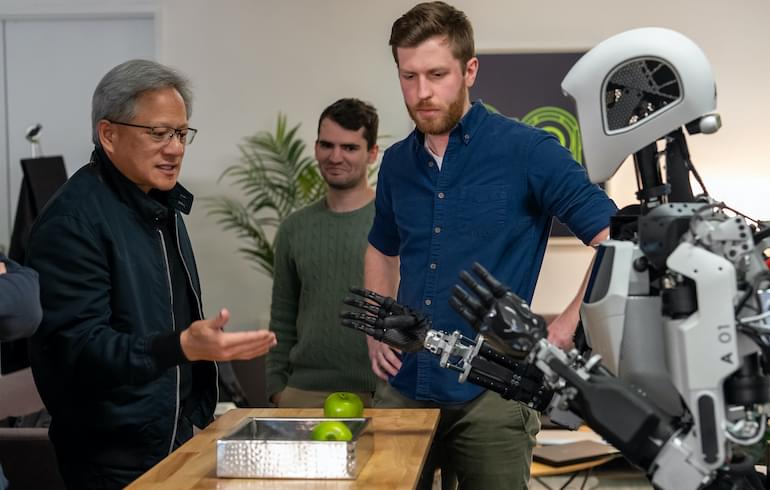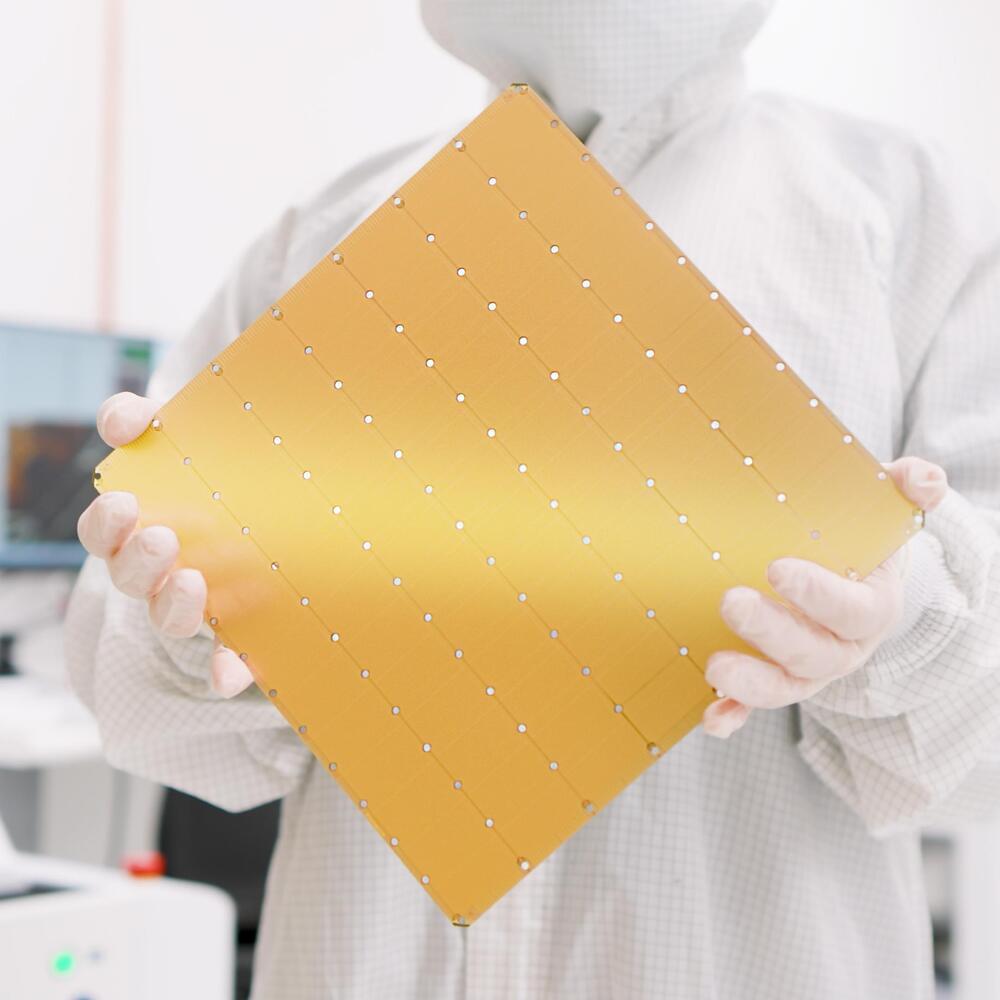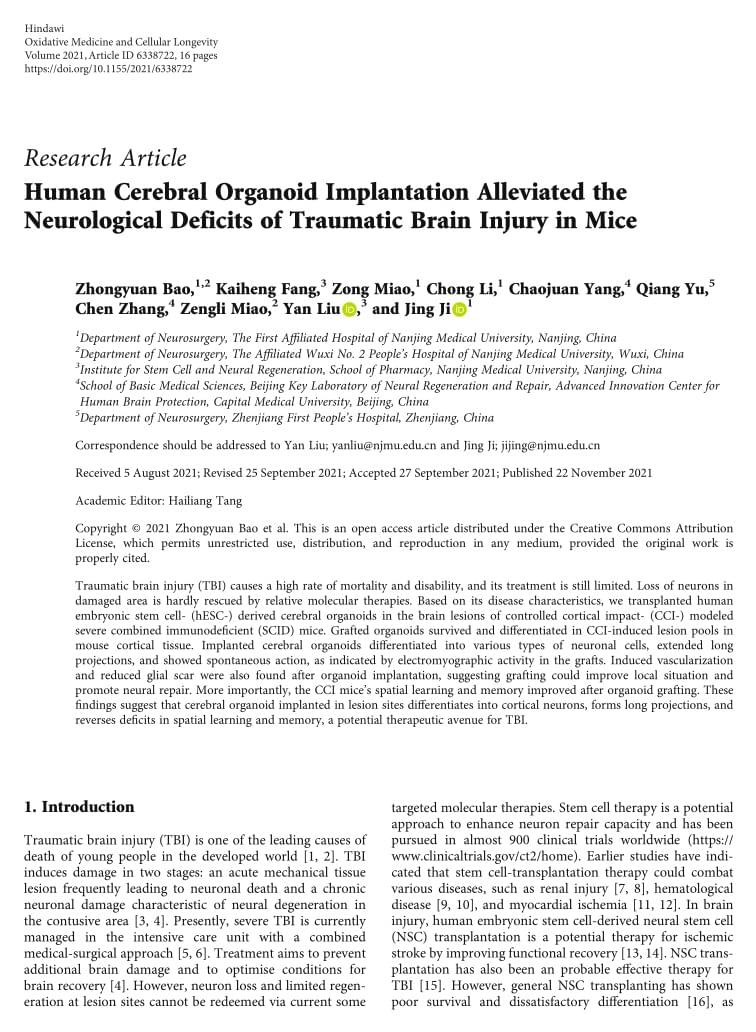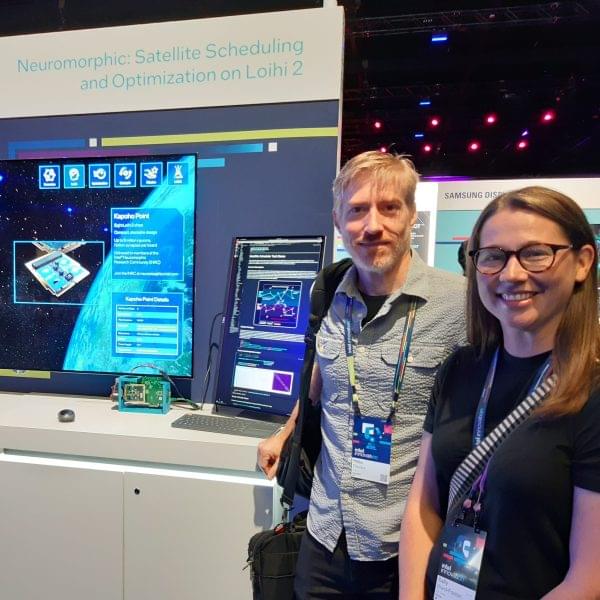Page 187
Mar 24, 2024
Probabilistic Neural Computing with Stochastic Devices
Posted by Dan Breeden in categories: information science, robotics/AI
The brain has effectively proven a powerful inspiration for the development of computing architectures in which processing is tightly integrated with memory, communication is event-driven, and analog computation can be performed at scale. These neuromorphic systems increasingly show an ability to improve the efficiency and speed of scientific computing and artificial intelligence applications. Herein, it is proposed that the brain’s ubiquitous stochasticity represents an additional source of inspiration for expanding the reach of neuromorphic computing to probabilistic applications. To date, many efforts exploring probabilistic computing have focused primarily on one scale of the microelectronics stack, such as implementing probabilistic algorithms on deterministic hardware or developing probabilistic devices and circuits with the expectation that they will be leveraged by eventual probabilistic architectures. A co-design vision is described by which large numbers of devices, such as magnetic tunnel junctions and tunnel diodes, can be operated in a stochastic regime and incorporated into a scalable neuromorphic architecture that can impact a number of probabilistic computing applications, such as Monte Carlo simulations and Bayesian neural networks. Finally, a framework is presented to categorize increasingly advanced hardware-based probabilistic computing technologies.
Keywords: magnetic tunnel junctions; neuromorphic computing; probabilistic computing; stochastic computing; tunnel diodes.
© 2022 The Authors. Advanced Materials published by Wiley-VCH GmbH.
Mar 24, 2024
Emerging Artificial Neuron Devices for Probabilistic Computing
Posted by Dan Breeden in categories: biological, finance, information science, robotics/AI
Probabilistic computing with stochastic devices.
In recent decades, artificial intelligence has been successively employed in the fields of finance, commerce, and other industries. However, imitating high-level brain functions, such as imagination and inference, pose several challenges as they are relevant to a particular type of noise in a biological neuron network. Probabilistic computing algorithms based on restricted Boltzmann machine and Bayesian inference that use silicon electronics have progressed significantly in terms of mimicking probabilistic inference. However, the quasi-random noise generated from additional circuits or algorithms presents a major challenge for silicon electronics to realize the true stochasticity of biological neuron systems. Artificial neurons based on emerging devices, such as memristors and ferroelectric field-effect transistors with inherent stochasticity can produce uncertain non-linear output spikes, which may be the key to make machine learning closer to the human brain. In this article, we present a comprehensive review of the recent advances in the emerging stochastic artificial neurons (SANs) in terms of probabilistic computing. We briefly introduce the biological neurons, neuron models, and silicon neurons before presenting the detailed working mechanisms of various SANs. Finally, the merits and demerits of silicon-based and emerging neurons are discussed, and the outlook for SANs is presented.
Keywords: brain-inspired computing, artificial neurons, stochastic neurons, memristive devices, stochastic electronics.
Continue reading “Emerging Artificial Neuron Devices for Probabilistic Computing” »
Mar 24, 2024
Cerebras Systems Unveils World’s Fastest AI Chip with Whopping 4 Trillion Transistors
Posted by Quinn Sena in categories: robotics/AI, supercomputing
Third Generation 5 nm Wafer Scale Engine (WSE-3) Powers Industry’s Most Scalable AI Supercomputers, Up To 256 exaFLOPs via 2048 Nodes.
SUNNYVALE, CALIFORNIA – March 13,202 4 – Cerebras Systems, the pioneer in accelerating generative AI, has doubled down on its existing world record of fastest AI chip with the introduction of the Wafer Scale Engine 3. The WSE-3 delivers twice the performance of the previous record-holder, the Cerebr as WSE-2, at the same power draw and for the same price. Purpose built for training the industry’s largest AI models, the 5nm-based, 4 trillion transistor WSE-3 powers the Cerebras CS-3 AI supercomputer, delivering 125 petaflops of peak AI perform ance through 900,000 AI optimized compute cores.
Key Specs:
Mar 24, 2024
Sequences in the ‘Dark Genome’ Could be Used to Diagnose Cancer Earlier
Posted by Shubham Ghosh Roy in category: biotech/medical

The human genome is primarily composed of long stretches of repeat nucleotides that do not code for protein (only about two percent of the human genomes does code for protein). This mysterious, non-protein-coding DNA was once disregarded as junk DNA, but scientists have begun to find sequences of importance within this ‘junk,’ which is now sometimes called genomic ‘dark matter.’ Some of these sequences appear to have important regulatory functions, and can control the expression of some protein-coding genes. But studying these sequences can be extremely challenging, particularly because they are not like protein-coding genes that can be studied with standard techniques.
But scientists have now found a great use for the dark genome. Reporting in Science Translational Medicine, researchers created a method to reveal elements of the dark genome in cancerous tissue and in the bloodstream, as fragments called cell-free DNA (cfDNA). These bits of DNA are lost from tumors and they move around the body in the bloodstream. This technique may eventually help scientists or clinicians identify cancer or monitor the progress of treatment.
Mar 24, 2024
New Protein Found to Mediate Immune Cell Response
Posted by Shubham Ghosh Roy in categories: biotech/medical, futurism
The immune system is a complex network of various cell types all working cohesively to identify and eliminate foreign invaders. Unfortunately, if a disease is strong enough or our immune system is not well equipped to accurately target the disease, we get sick until the immune system builds a strong enough immune response toward it. A great example includes vaccine biology. We are given an attenuated form of a disease and our body, not exposed to it before, will recognize the markers on the outside of the virus and make antibodies against it. Consequently, the immune system will build up a strong enough immune response to completely eradicate the disease from the body and also maintain memory cells that will instantly recognize future exposures of the same disease.
Different immune cells play various roles that effectively elicit an immune response. Innate immunity is the first barrier against disease. Cells in this barrier are non-specific and target a broad range of diseases but are less potent. Additionally, they take the protein or antigen from the disease and present it to more specific and effective immune cells in the adaptive immune system. These highly specific cells are mainly responsible for killing or lysing the disease. Cells in the adaptive immune system include T cells and B cells. T cells are a broad cell population with different responsibilities within each T cell subset. However, CD8+ T cells are the classic T cell subtype solely responsible for lysing foreign or invading cells. The field of T cell biology is ever expanding as scientists discover new ways to improve their function and effectively target disease.
A recent article published in the Journal of Immunology, by Dr. Tadashi Matsuda and others, discovered that a new protein, known as STAP-1, improves T cell activation. Matsuda, senior author on the paper, is a Professor and Principal Investigator at Hokkaido University in Japan. His work focuses on T cell biology and intracellular components of cellular immunity. Signal-Transducing Adaptor Protein-1 or STAP-1 was implicated as a mediator between intracellular proteins and eliciting an immune response. Interestingly, STAP-1 upregulates T cell receptor (TCR)-mediated T cell function and increased inflammatory response. Matsuda and others found that STAP-1 generates the activation of downstream signaling pathways associated with stronger T cell activity. While this may have seemed like a great marker to improve immune response, the team also discovered that knocking out STAP-1 reduces autoimmune disorder symptoms. Therefore, treatment application is context dependent.
Mar 24, 2024
Apptronik to integrate Apollo humanoid with NVIDIA general-purpose foundation model
Posted by Genevieve Klien in category: robotics/AI

Apptronik is working with NVIDIA’s Project GR00T to enable general-purpose humanoid robots to learn complex tasks.
Mar 24, 2024
Imagining Other Dimensions and Interdimensional Travel
Posted by Dan Breeden in category: quantum physics

An exploration of the concept of other dimensions and what sci fi gets right about it, and wrong. Also included is String theory’s view of upper dimensions and its descriptions of them.
My Patreon Page:
Continue reading “Imagining Other Dimensions and Interdimensional Travel” »
Mar 24, 2024
Human Cerebral Organoid Implantation Alleviated the Neurological Deficits of Traumatic Brain Injury in Mice
Posted by Dan Breeden in categories: biotech/medical, neuroscience
Traumatic brain injury (TBI) causes a high rate of mortality and disability, and its treatment is still limited. Loss of neurons in damaged area is hardly rescued by relative molecular therapies. Based on its disease characteristics, we transplanted human embryonic stem cell-(hESC-) derived cerebral organoids in the brain lesions of controlled cortical impact-(CCI-) modeled severe combined immunodeficient (SCID) mice. Grafted organoids survived and differentiated in CCI-induced lesion pools in mouse cortical tissue. Implanted cerebral organoids differentiated into various types of neuronal cells, extended long projections, and showed spontaneous action, as indicated by electromyographic activity in the grafts. Induced vascularization and reduced glial scar were also found after organoid implantation, suggesting grafting could improve local situation and promote neural repair. More importantly, the CCI mice’s spatial learning and memory improved after organoid grafting. These findings suggest that cerebral organoid implanted in lesion sites differentiates into cortical neurons, forms long projections, and reverses deficits in spatial learning and memory, a potential therapeutic avenue for TBI.
Mar 24, 2024
What Is Holding Back Neuromorphic Computing?
Posted by Dan Breeden in category: robotics/AI
We discuss the commercial readiness of spiking neural networks and the potential for spiking LLMs with Intel’s Mike Davies.














